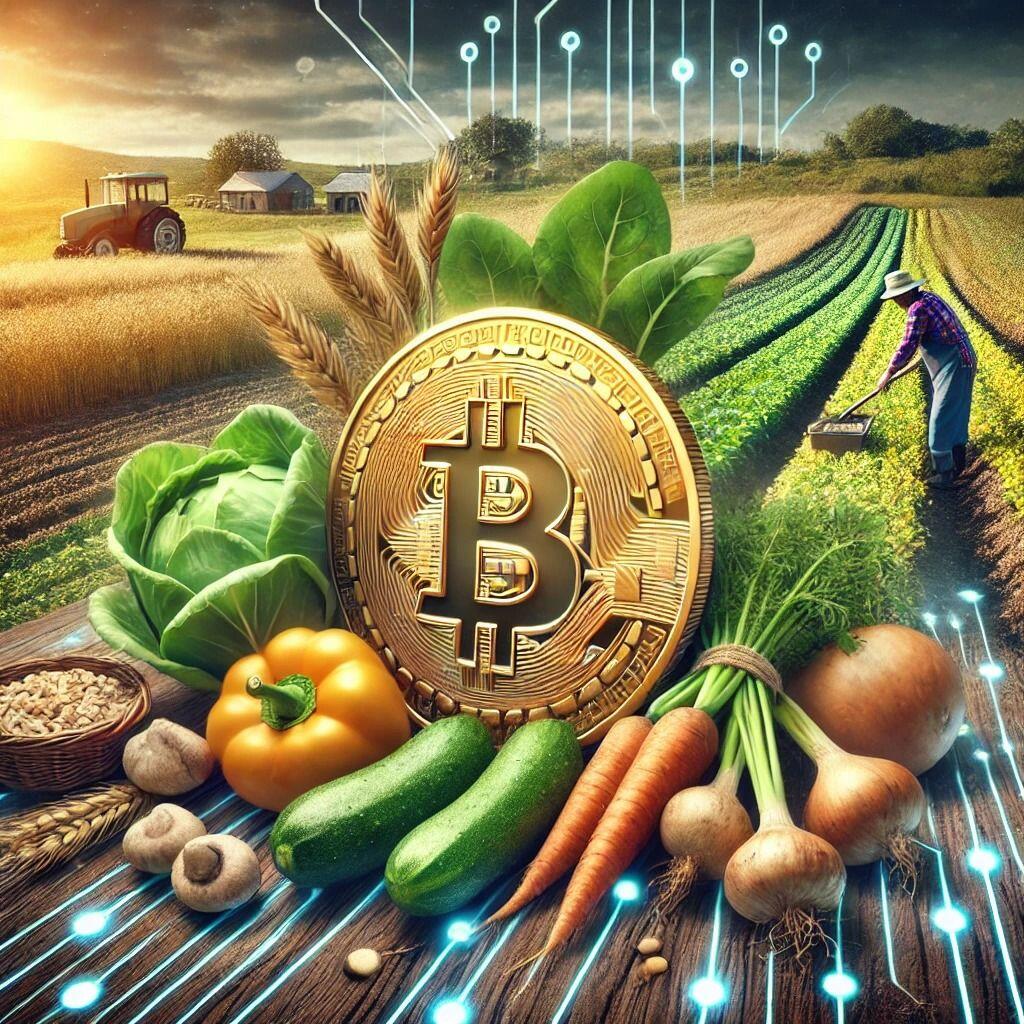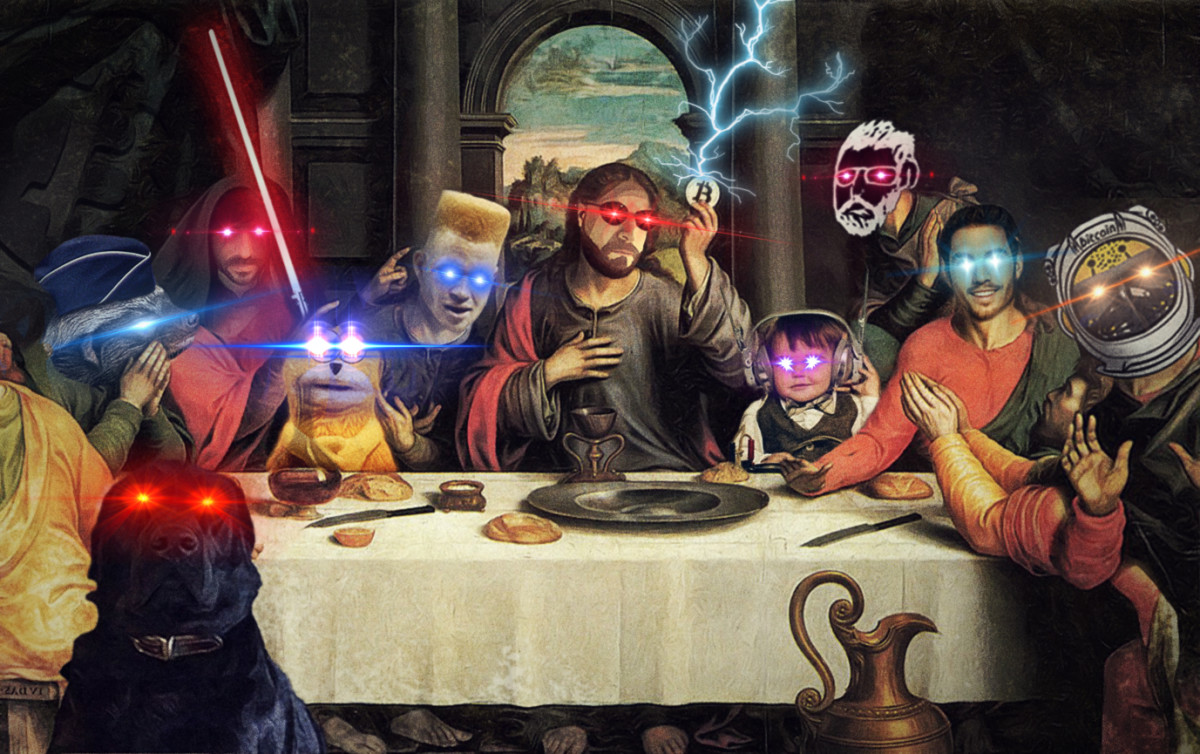Elvasco on Nostr: ...

At first glance, food and money might seem like two totally different worlds. But when you dig a little deeper, you start to see how the Slow Food movement and Bitcoin have a lot in common. Both are all about valuing quality over quantity, focusing on community instead of centralization, and staying true to what really matters in a world that’s often all about speed and convenience.
The Slow Food movement got its start in 1986, in Italy, as a protest led by Carlo Petrini against the opening of a McDonald’s near the Spanish Steps in Rome. It wasn’t just about a burger joint—it was about protecting traditional Italian cuisine from being overshadowed by fast food culture. While the protest started in 1986, the movement officially became an organization in 1989, and since then, it’s gone global. The mission? To promote “good, clean, and fair food,” while protecting local traditions, supporting small farmers, and encouraging sustainable agriculture.
At the core of the Slow Food movement is the idea that food should be good, clean, and fair. Food should be good because it has to be tasty, made with quality ingredients, and nourishing. Food should be clean because it shouldn’t be packed with toxic agrochemicals or GMOs; it should be organic and natural. And food should be fair because the people who produce it deserve a fair share of the value for their hard work, while consumers should get to vote with their wallets for the kind of food they want to see more of. It’s not just about eating—it’s about enjoying each bite, knowing where it came from, and supporting your local producers.
In the same way, Bitcoin is about valuing sound money and treating each satoshi with the respect it deserves. Just like Slow Food encourages us to appreciate quality ingredients, Bitcoin teaches us to see the long-term potential of each piece of currency, valuing what’s real over what’s quick and mass-produced.
One of the coolest things about the Slow Food movement is how much it values community. It’s all about supporting local farmers, artisans, and producers, and building connections between the people who grow your food and the people who eat it. Bitcoin has a similar vibe—it’s about creating a decentralized financial system where people can connect directly, without needing a bank or any other middleman. Whether it’s supporting your local farmers’ market or attending a Bitcoin meetup, both movements are all about participation and getting involved at the grassroots level.
Bitcoin can take Slow Food’s ideas to the next level. Bitcoin has the power to create circular economies where food producers can directly sell their products to consumers, cutting out middlemen like banks and financial institutions. This allows the producers to get the fair value they deserve for their hard work and dedication—their "proof of work," if you will. In a system like this, the value stays within the community, benefiting both the producers and the consumers, and making sure that local economies thrive.
As a chef in Argentina, I've been part of the Slow Food movement since 2014. I have been involved in several community projects helping local farmers get in touch directly with their customers. One of these projects made a huge impact on me because it made me realize the power of circular economies and the importance of community. This particular project involved a community of goat farmers in Santiago del Estero, a province in northern Argentina. The farmers, mostly women, grew goats mainly to feed their families. With the extra milk, they started making cheese at a local factory. This was a huge deal because they could make extra money to support their families. By helping them connect directly with their customers and receiving fair value for their hard work, it made the whole endeavor very successful. So successful that they were able to build infrastructure around their town, such as an electric grid and a proper sewer system—things they didn’t have before. This was a perfect example of the power of food being fair. It shows the real impact on quality of life when farmers receive fair value for their time and energy.
Both Slow Food and Bitcoin put a big emphasis on authenticity and transparency. With Slow Food, you can trace your meal back to the farm, getting to know the people and processes that went into it. Bitcoin, on the other hand, operates on an open-source blockchain where anyone can verify transactions. In a world where so many things are hidden behind corporate walls—whether it’s how your food is made or how your money is handled—both movements push for openness and understanding. They want you to know your food, and they want you to know your money.
The Slow Food movement is basically the ultimate "slow down" in a world obsessed with fast food. It rejects the idea that everything has to be done quickly and instead promotes a thoughtful, slower approach to eating and food production. Bitcoin is kind of like that too, especially when it comes to the idea of "hodling"—holding onto Bitcoin for the long term rather than rushing to cash in when the market gets crazy. Both movements understand that good things take time. Just like it takes time to grow high-quality food, Bitcoin’s real value becomes more apparent as it grows and matures over time.
Both Slow Food and Bitcoin share a vision of a more sustainable future. Slow Food promotes farming practices that respect the land and encourage biodiversity. Similarly, Bitcoin offers a financial system that empowers individuals, freeing them from the constraints of centralized banking and inflation-prone fiat currencies. At their core, both movements are about creating something more lasting, something rooted in respect for people, the planet, and value itself.
In a world that’s all about quick fixes and instant gratification, the Slow Food movement and Bitcoin offer a refreshing reminder to slow down and focus on what really matters. Both movements encourage us to appreciate quality over quantity, build genuine connections, and support a more sustainable and fair future.
As I explore both these worlds, I’m finding they complement each other perfectly. Together, they offer a holistic approach to living—one that values food and finance in a meaningful way. Just like a great meal, combining Slow Food and Bitcoin creates a nourishing experience that celebrates the best of life. It’s all about savoring the journey, supporting real craftsmanship, and building a future that’s equitable and sustainable for everyone.
So, if you are a Bitcoiner I’m sure by now you must have heard the term “Fiat Food.” In my next post, I’m gonna dive into the differences between “Fiat Food” and “Bitcoin Food.” It’s gonna be a challenge because there is a lot to talk about on this topic, but I’ll give it a shot! Now, I have to go…
I’m at the office in my restaurant writing these lines, and I can hear the ticket printer in the kitchen going crazy!
Gotta go cook some Bitcoin food!
